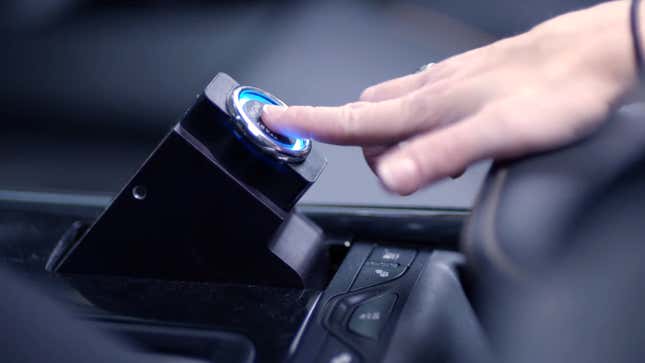The National Transportation Safety Board says every new car in the U.S. should come with alcohol-detection systems that would prevent owners from driving their cars when drunk. On Tuesday, the agency released a report citing the need for automakers in the U.S. to install passive monitoring systems, which could be available as early as 2026.
These passive systems have little in common with devices that most people associate with alcohol-detection in cars; there’s neither a hand-held breathalyzer nor a litany of coordination tests. The “noninvasive” technology the NTSB is calling for would be fully-integrated in new models. It’s basically a series of sensors that monitor alcohol levels in air exhaled by drivers, along with other touch-based sensors that read blood-alcohol levels by using light.

The air sensors could be mounted on the steering column, behind the steering wheel, and touch sensors could be built into start/stop buttons. These systems would automatically test for unsafe alcohol levels, and limit or prevent drivers from operating their cars if they were found to be impaired.
According to the Associated Press, development of the drunk-driving tech has been ongoing since 2008 with the research and funding coming mainly from NHTSA and a group of automakers. The joint effort culminated with a group called the Driver Alcohol Detection System for Safety or DADDS, as Automotive News reports.
The DADDS group has led the advancement of the tech, which the NTSB says could be licensed by automakers in the U.S. by 2024, and be available in new cars just two years later.
This tech is much less clunky than I would’ve thought. If the final systems are as unobtrusive as they seem, they could help. Even though the latest reports say traffic deaths are going down, drunk driving is still a big part of the problem — accounting for about 30 percent of all U.S. traffic deaths.
According to the AP, 11,654 people died in alcohol-related crashes in 2020, which is a 14 percent increase over the year before, in 2019. The NTSB cited a crash in 2021 that killed two adults and seven children in California, after a 28-year-old drunk driver crashed his SUV into a Ford F-150.
The drunk driver was headed home after a New Year’s Day party, going 88 to 98 miles per hour when he veered into oncoming traffic and crashed head-on with the truck. The truck caught fire, and bystanders couldn’t reach the passengers who hadn’t died in the crash. The seven kids in the truck were between 6 and 15 years of age.
At the time of the crash, the SUV driver’s blood-alcohol level was 0.21 percent, which is nearly three times the legal limit in the state. These kind of accidents is what DADSS tech could help prevent, according to the NTSB.
But the NTSB has no regulatory authority, which is why it’s only recommending that passive alcohol-detection systems be installed in new passenger cars. The NTSB is passing its recommendation along to NHTSA, which will have to decide whether to make alcohol-detection systems mandatory by November of 2024.
